published work |
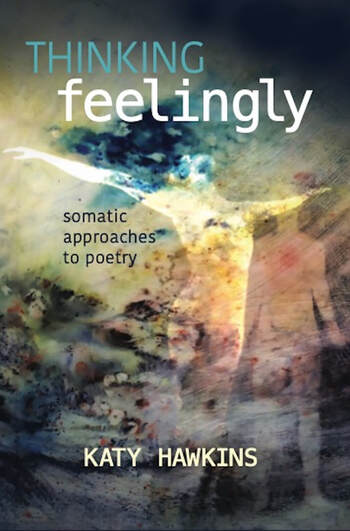
Thinking Feelingly: Somatic Approaches to Poetry
"Thinking Feelingly is on my table, beautiful in its manifold presences. I am blessed by the vision of this book, and the contemplation of its hoped-for work in the world." - Bayo Akómoláfé
"What treasures fill this fine book - the poems, the insights, the invitations... may it do its work in the world widely." - Jane Hirschfield
"Thinking Feelingly: Somatic Approaches to Poetry deftly and deliberately integrates the lived experience of the body into the process of encountering poetry. Katy Hawkins invites us to notice how a poem can serve as a catalyst for a visceral response to the world that the poet has depicted."
- Rae Johnson
Thinking Feelingly is a collection of essays, an eclectic anthology of famous and more obscure poems, and a body of somatic practices, all designed to explore how poetry might be experienced with the whole self, through emotion, physiology, and intuition. Each chapter carefully selects poetry for each week of the calendar year, spends a few pages lingering with them, and offers an embodied practice for engaging them at the level of bone and skin. You'll find a wide range of somatic techniques, from breathwork to movement to visualizations to way quirkier experiments. Jokes and personal anecdotes live alongside ruminations about how poetry can convey deep wisdom. These pages want to share shivers with you, relishing poems using the same sense-based capacities with which we actually encounter them. Aligned with emergent liberatory work that seeks to mobilize stuck spots in our current thinking, this project hopes to open up new questions rather than answering old ones. Most centrally: what practices drop poetry into gut feeling?
"Thinking Feelingly is on my table, beautiful in its manifold presences. I am blessed by the vision of this book, and the contemplation of its hoped-for work in the world." - Bayo Akómoláfé
"What treasures fill this fine book - the poems, the insights, the invitations... may it do its work in the world widely." - Jane Hirschfield
"Thinking Feelingly: Somatic Approaches to Poetry deftly and deliberately integrates the lived experience of the body into the process of encountering poetry. Katy Hawkins invites us to notice how a poem can serve as a catalyst for a visceral response to the world that the poet has depicted."
- Rae Johnson
Thinking Feelingly is a collection of essays, an eclectic anthology of famous and more obscure poems, and a body of somatic practices, all designed to explore how poetry might be experienced with the whole self, through emotion, physiology, and intuition. Each chapter carefully selects poetry for each week of the calendar year, spends a few pages lingering with them, and offers an embodied practice for engaging them at the level of bone and skin. You'll find a wide range of somatic techniques, from breathwork to movement to visualizations to way quirkier experiments. Jokes and personal anecdotes live alongside ruminations about how poetry can convey deep wisdom. These pages want to share shivers with you, relishing poems using the same sense-based capacities with which we actually encounter them. Aligned with emergent liberatory work that seeks to mobilize stuck spots in our current thinking, this project hopes to open up new questions rather than answering old ones. Most centrally: what practices drop poetry into gut feeling?
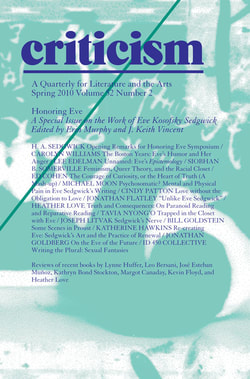
"Re-Creating Eve: Sedgwick's Art and the Practice of Renewal" in Criticism 52:2
"Katherine Hawkins's piece recognizes a certain development or transformation across the span of Sedgwick's career... in the intersection of Sedgwick's art and her increasingly Buddhist-inflected readings of Proust. In carefully layered readings of several examples of Sedgwick's textile and book art, all of which engage Proust's work, Hawkins shows how they explore closed and open systems, body and mind, paranoid and reparative modes, the individual and the supraindividual. Hawkins's take on Sedgwick's tactile turn also illuminates a new approach, inspired by Buddhist teachings of emptiness, to the overcoming of identity. Hawkins goes on to describe what she calls the 'almost indistinguishable attractions to nonidentity and nonbeing' evident in Sedgwick's work as what might differentiate her from Proust."
- Keith Vincent
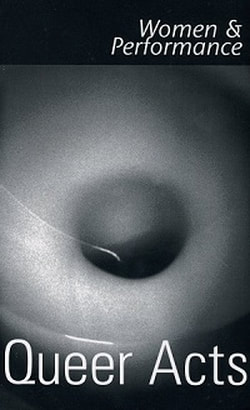
"Woven Spaces" in Women and Performance: A Journal of Feminist Theory 16:2
This examination of Eve Kosofsky Sedgwick's A Dialogue on Love is part of a larger project that studies unusual illness narratives to determine how experimentation with form facilitates new ways of understanding bodily crisis. Sedgwick's approach to metastatic breast cancer develops the theoretical concepts from across her oeuvre; A Dialoguelayers theories of nonlinear time, hybrid form, and intersubjective relation within a 17th-century mode of Japanese linked verse called haibun. Close engagement with these historical, formal and theoretical matrices reveal how Sedgwick's interventions in queer theory achieve their most radical expression in her illness narrative, which has not received adequate critical attention as an important extension of her scholarship.
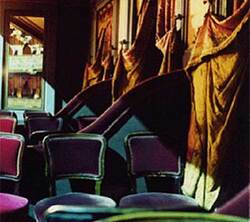
"Alchemy Girl" in Painted Bride Quarterly #69
"I’m watching Jamie watching blue
on a Tuesday in the Musée Picasso
Her head is cocked like she’s sorry for him
And I want to smack that disenchanted pout
off her head till it straightens out
her head with the perfect little freckles shaken
like salt from the brown doe eyes shaken
like salt like sweat like smoke
smoke like hot on her neck
the neck that makes me hate the shirt
for covering half of it (like birches intertwined, her neck)
the stiff-collared shirt tucked into her jeans...."
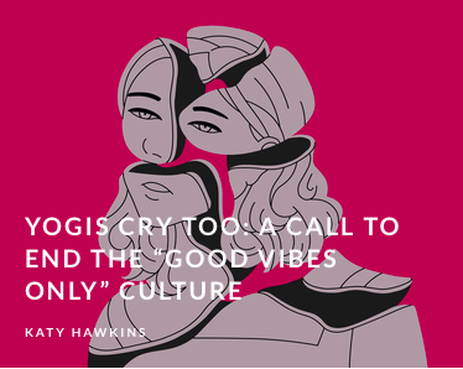
"Yogis Cry Too: A Call to End the 'Good Vibes Only' Culture" in Shut Up and Yoga
"We need to cultivate a collective skepticism about the power of an optimistic outlook to produce immediate personal and societal results. We need to recognize and honor the effort over months and seasons and years and lifetimes required for change.
Yoga. Takes. Time.
Just as blocks in the fascia won't be untangled by one wild night with a TB12 Vibrating Pliability Roller, psychic knots are equally stubborn. The yamas and niyamas, or guidelines for behavior in our relationship to self and world, aren't a quick panacea. They address our behaviors, not our feelings. These teachings do not instruct us to beat our emotions into a fluffy meringue. Instead, by controlling our actions over time, we are lucky to experience an organic deepening, maturation, and settling of the psyche. It's an excruciating practice that produces slow results if we can show up day after day for the deliberate discipline of it."
"We need to cultivate a collective skepticism about the power of an optimistic outlook to produce immediate personal and societal results. We need to recognize and honor the effort over months and seasons and years and lifetimes required for change.
Yoga. Takes. Time.
Just as blocks in the fascia won't be untangled by one wild night with a TB12 Vibrating Pliability Roller, psychic knots are equally stubborn. The yamas and niyamas, or guidelines for behavior in our relationship to self and world, aren't a quick panacea. They address our behaviors, not our feelings. These teachings do not instruct us to beat our emotions into a fluffy meringue. Instead, by controlling our actions over time, we are lucky to experience an organic deepening, maturation, and settling of the psyche. It's an excruciating practice that produces slow results if we can show up day after day for the deliberate discipline of it."
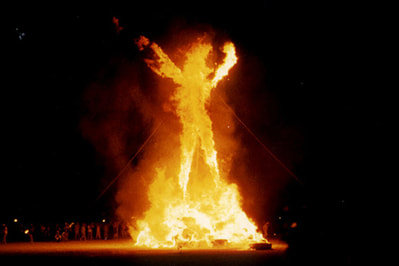
"Owner's Manual for a Burning Life" in Elephant Journal
"In the book of Daniel, three young Jews suffer execution Babylonian-style by being thrown into a furnace. Fun. But when folk gather round to watch them burn, they see not three but four figures in the flames—they are joined by someone or something. More miraculously, according to one translation of the Aramaic, the men were dancing.
The divine role in our suffering in this fire metaphor is very different from Rumi's remote blacksmith, holding us in the flame—here, we are held, companioned. We are actually embraced in our burning, to the point where we are taken over by a strange and purifying joy, bringing us to dance. If we can go deep enough, if we can dauntlessly sound the depths of the furnace, a strange, clarifying release awaits us. We do emerge as something new—rich and strange."
"In the book of Daniel, three young Jews suffer execution Babylonian-style by being thrown into a furnace. Fun. But when folk gather round to watch them burn, they see not three but four figures in the flames—they are joined by someone or something. More miraculously, according to one translation of the Aramaic, the men were dancing.
The divine role in our suffering in this fire metaphor is very different from Rumi's remote blacksmith, holding us in the flame—here, we are held, companioned. We are actually embraced in our burning, to the point where we are taken over by a strange and purifying joy, bringing us to dance. If we can go deep enough, if we can dauntlessly sound the depths of the furnace, a strange, clarifying release awaits us. We do emerge as something new—rich and strange."

"Deeper than Gender" in Elephant Journal
"Nobody knows which aspects of gender are deep-seated mysteries pumping through our gonads, as opposed to behaviors we've adopted over time to thrive or just cope. But identity is shifting and elusive, and figuring it out is like fingering mercury. In the wise words of Princess Leia, the more you tighten your grip, the more star systems will slip through your fingers. Most people go to yoga to drop down below the messiness of identity, to find enough silence to hear the sound of blood in their veins. The stillness when we sit in meditation is a current that flows way down, deeper than gender. Our job as practitioners is to drop down below the churny waters into the deep, still world. Our job as yoga teachers is to offer a way down."
"Nobody knows which aspects of gender are deep-seated mysteries pumping through our gonads, as opposed to behaviors we've adopted over time to thrive or just cope. But identity is shifting and elusive, and figuring it out is like fingering mercury. In the wise words of Princess Leia, the more you tighten your grip, the more star systems will slip through your fingers. Most people go to yoga to drop down below the messiness of identity, to find enough silence to hear the sound of blood in their veins. The stillness when we sit in meditation is a current that flows way down, deeper than gender. Our job as practitioners is to drop down below the churny waters into the deep, still world. Our job as yoga teachers is to offer a way down."
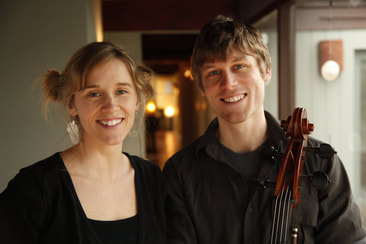
"The Sound, The Silence, and the Experience of Dropping In"
A little sum'n sum'n on growing up Quaker, me and my sibling, and the experience of the sound of silence.